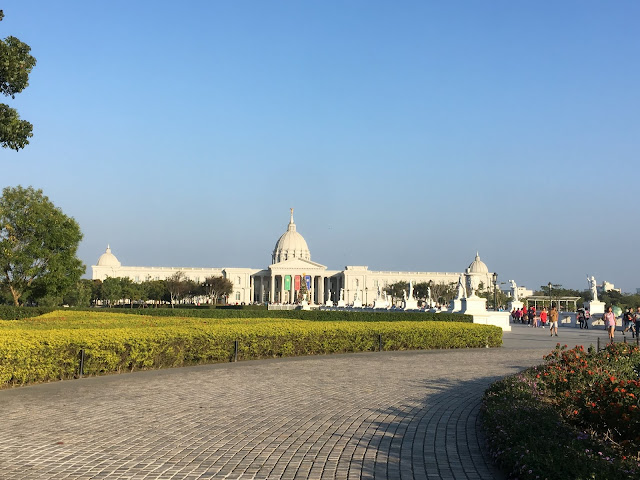
Jingzijiao Wapan Salt Fields (井仔腳瓦盤鹽田)
On our visit to Tainan, we made sure to explore the Jingzijiao Wapan Salt Fields (井仔腳瓦盤鹽田), which is the oldest manual salt production site in Taiwan with a 200-year tradition.
The salt fields are renowned for their picturesque scenery, particularly during sunset, making it a popular spot for photographers. I observed and learned from their photography techniques, despite the cold weather. Many people come here to witness the beauty. The place is open to visitors at all times and admission is free. If you arrive early enough, you can also see around three workers tending to the fields.
The production of salt in Taiwan's coastal areas predates the formal salt production period. Initially, residents boiled seawater to obtain salt or traded with merchants from mainland China. In 1648, the Dutch East India Company imported crushed stones required for salt granulation from mainland China and established salt mines. However, the salt produced here was bitter and unsellable, so Taiwan relied on salt imports from mainland China until the end of Dutch rule. Only local residents continued to produce their own sea salt.
In June 1895, Japan began ruling Taiwan, and the monopoly system was abolished the following month. However, the sudden change resulted in the disintegration of Taiwan's original salt sales network. The salt produced here faced difficulties in finding buyers, and many salt farmers transitioned to sun-drying fields. Consequently, the area of the salt fields reduced from 640 to 203. During World War I, with the growth of Japanese industry, there was an increased demand for industrial salt. To meet this demand, the Taiwan Governor's Monopoly Bureau established the "Taiwan Salt Co., Ltd." in 1919, responsible for salt production, while Dainippon Salt Co., Ltd. handled salt exports to Japan.


Originally, the salt fields were located in Fengshan but were relocated twice due to flooding. Since their establishment in the north of Tainan in 1818 by salt farmers, they have remained in the same location. The area used to be called Yongdong Field. In 1952, the site was redesigned and transformed into a central-style tiled-paved salt field. Another notable attraction in the area is the salt mountain, which visitors can climb to the top, although there may be an entrance fee.
In 2002, many salt fields closed due to high costs, leading to the abandonment of several sites. The management office of the Yunjianan Binhai National Scenic Area has made significant efforts to attract tourists to the area, providing an opportunity for people to experience the traditional salt-making and salt-picking practices.
Salt production involves drawing seawater into salt pans and allowing it to evaporate under the sun for 3-5 days. The salt fields we visited are created by manually laying broken pottery and tile debris onto the crystallizing pond. This method produces purer and clearer salt. Tile-paved salt fields heat up faster, allowing for quicker salt production, while sand-paved salt fields have a slower process but can yield more salt at a lower cost.
During our visit, we observed people working in the fields, which provided us with insights into the local culture. There are also several shops in the area, offering different types of salt and traditional food. Additionally, visitors can climb the viewing tower to enjoy a higher vantage point and take in the surroundings.
The small salt hills surrounded by water and the reflection of the sunset create a truly breathtaking sight. This place has become a unique and captivating landscape. Children can also play in the salt fields, akin to playing with snow. There are two salt fields where they can freely explore and have fun.
See also: Sio House and History of salt



































 .
.







